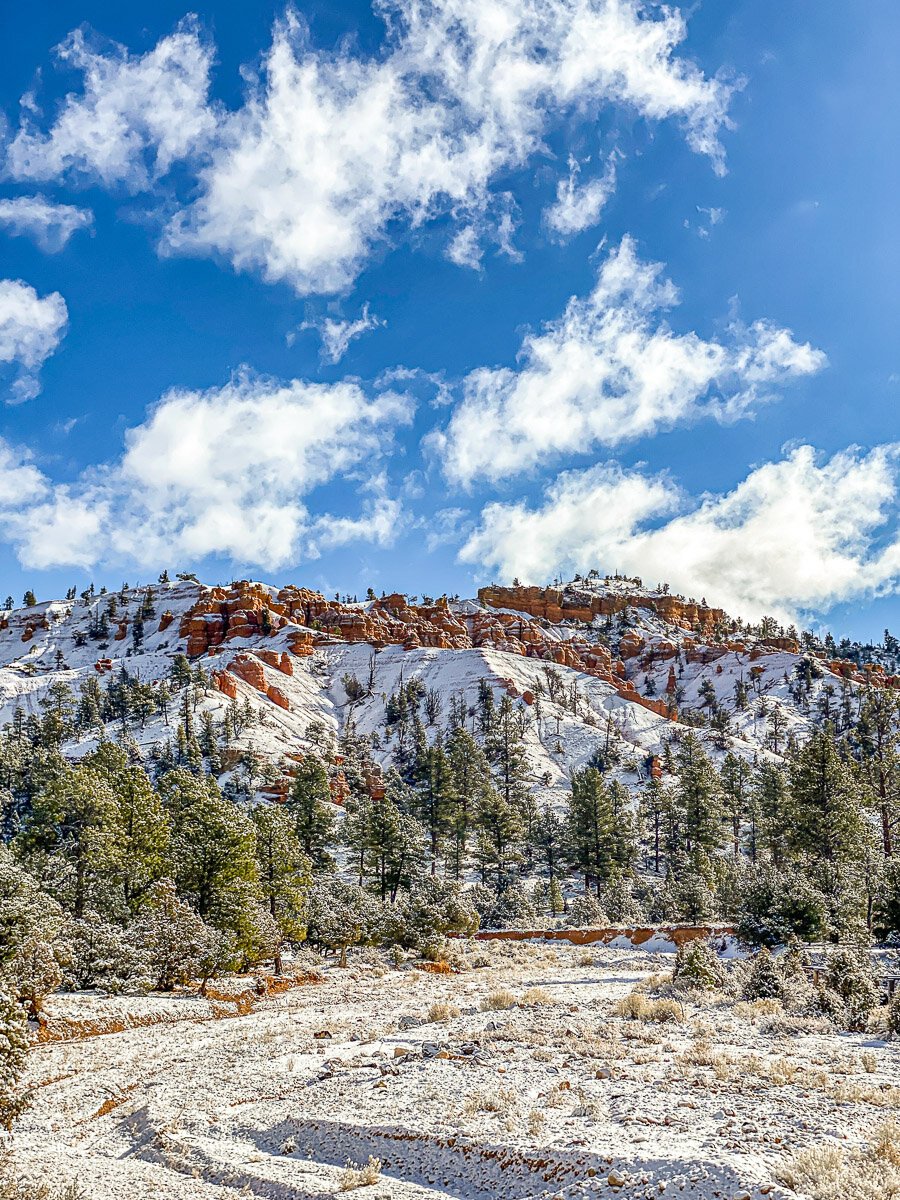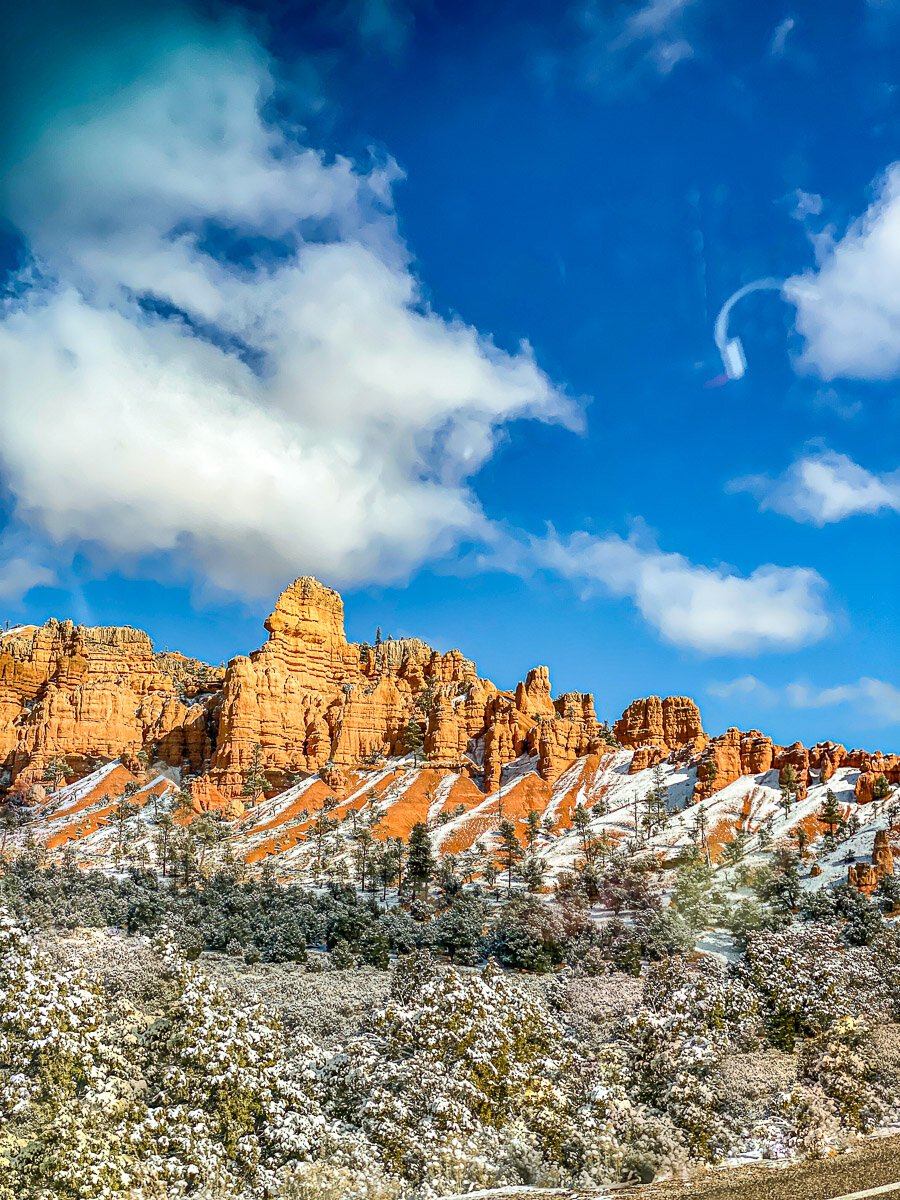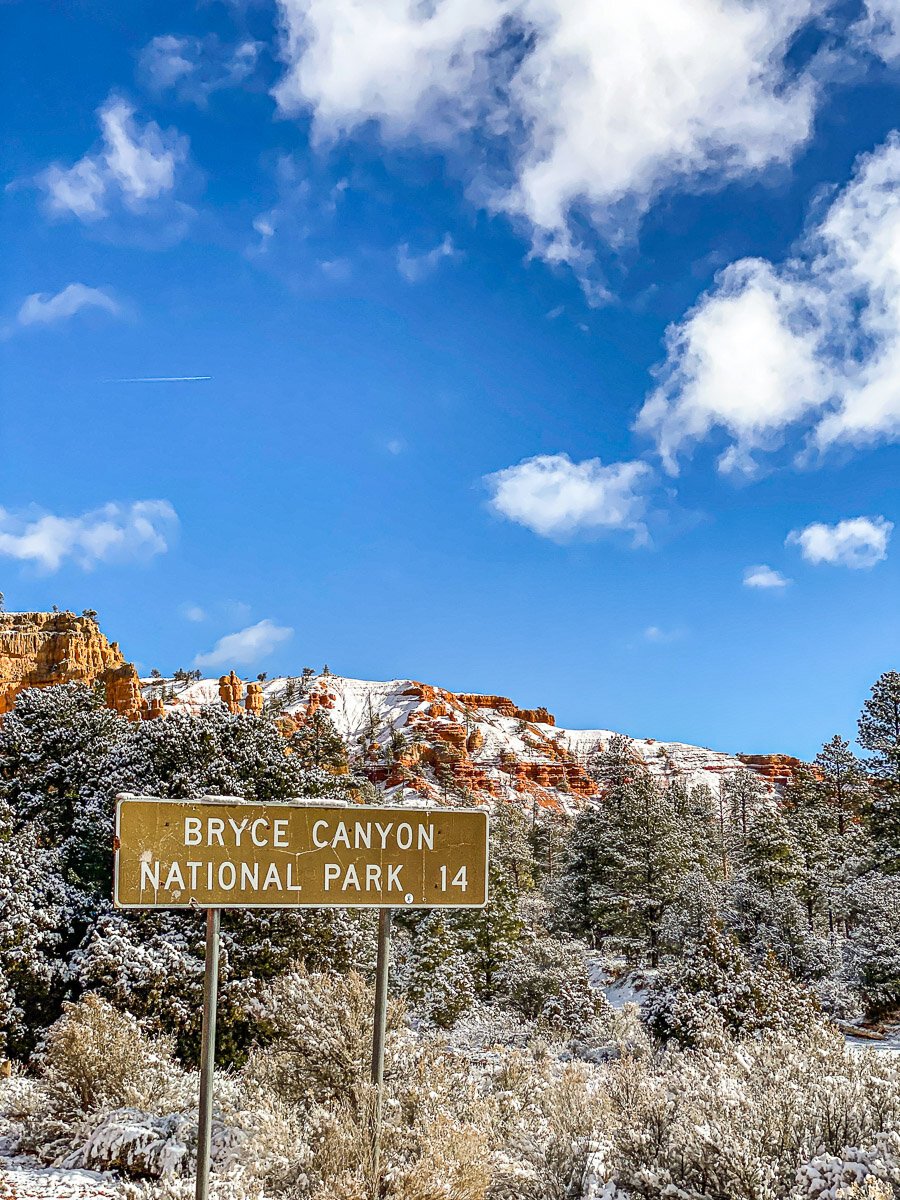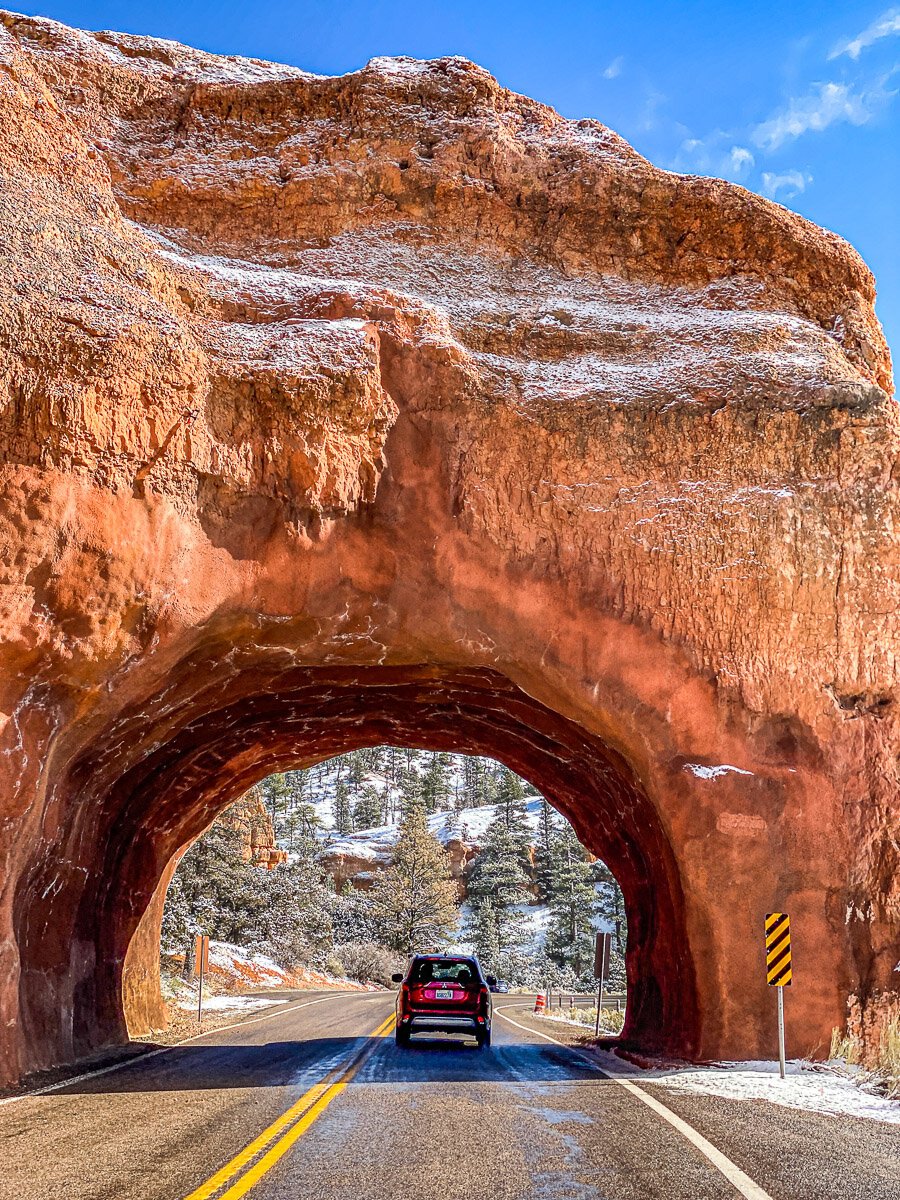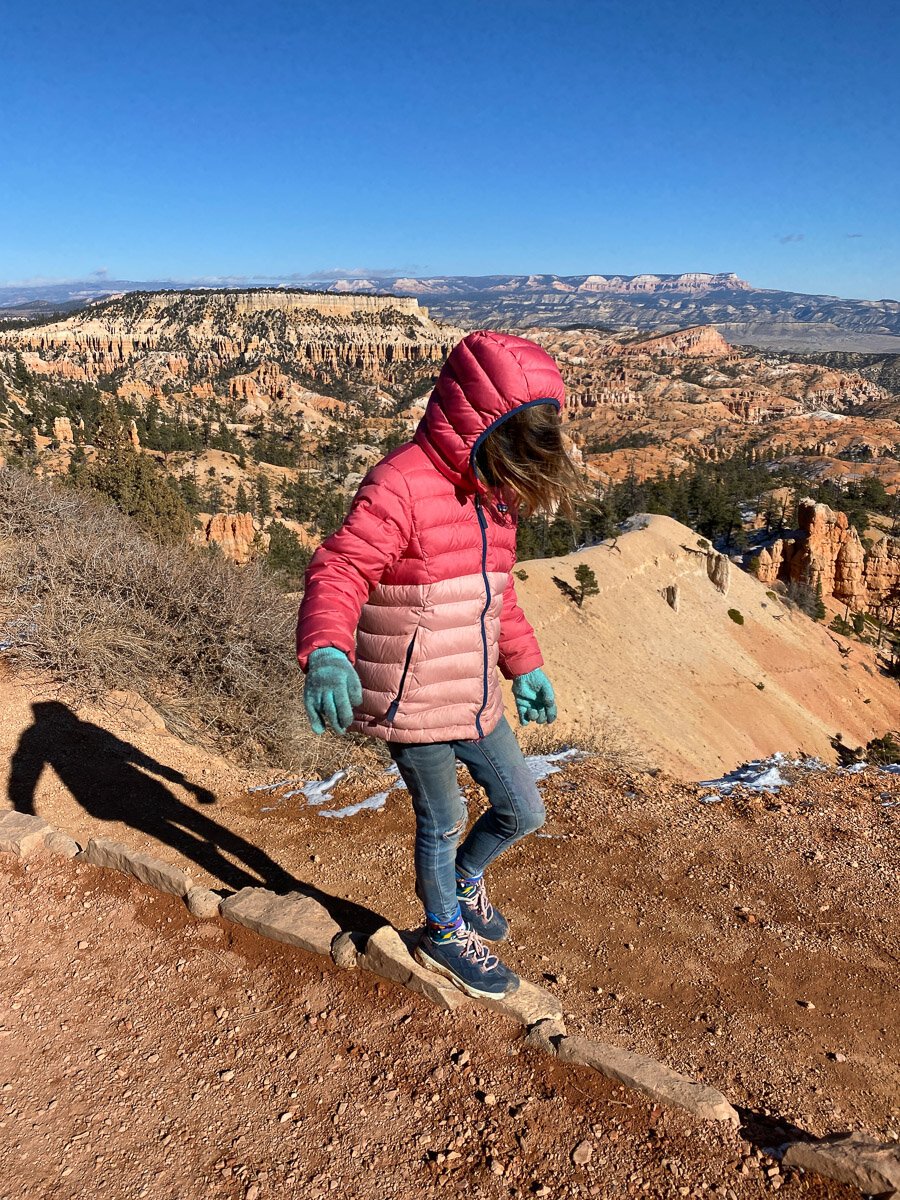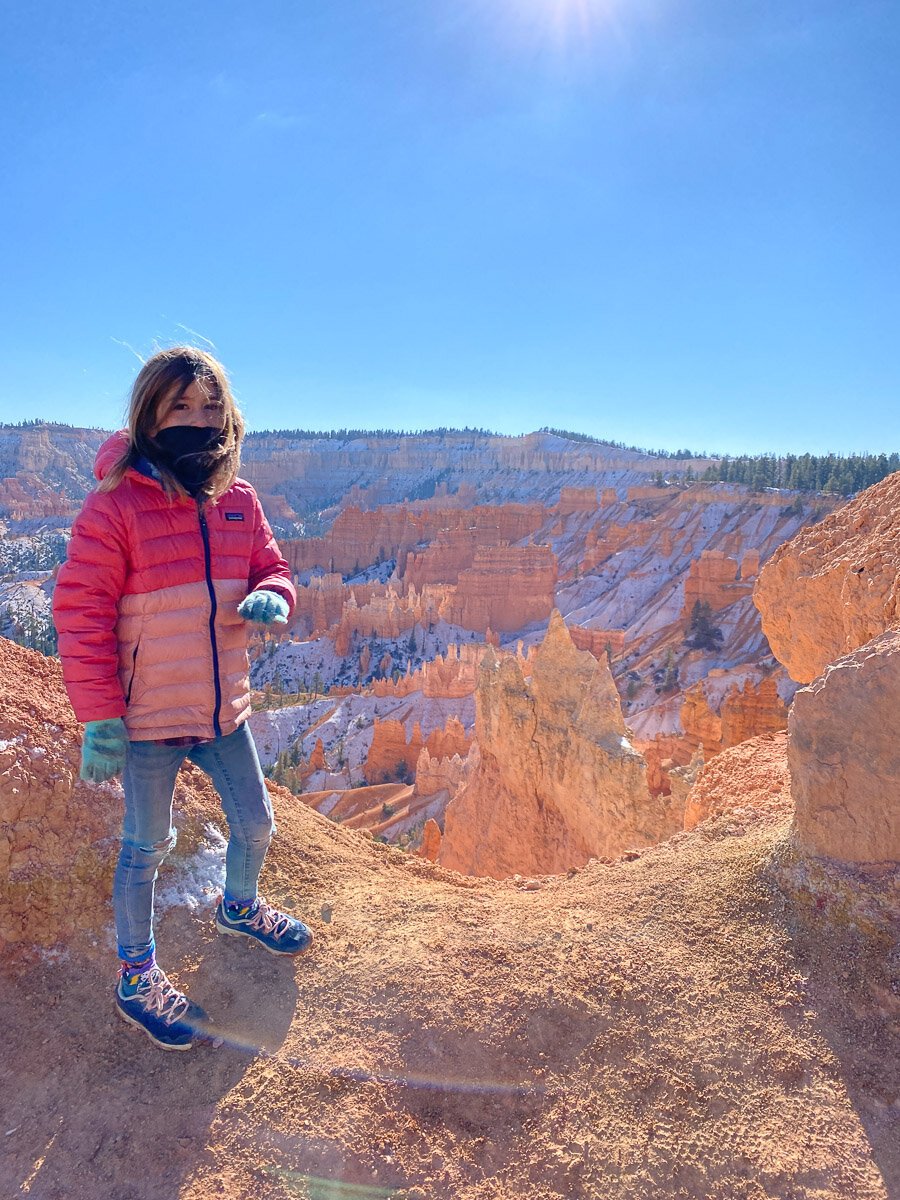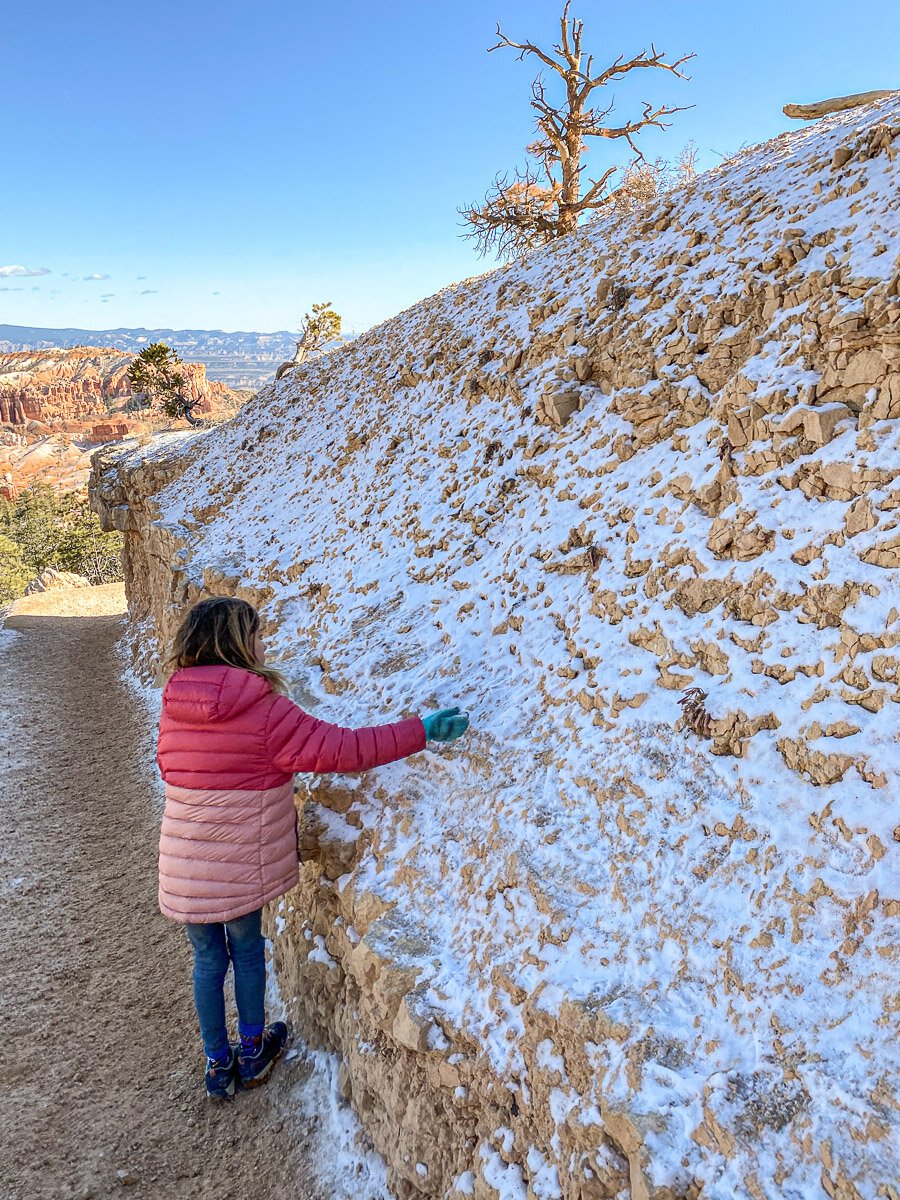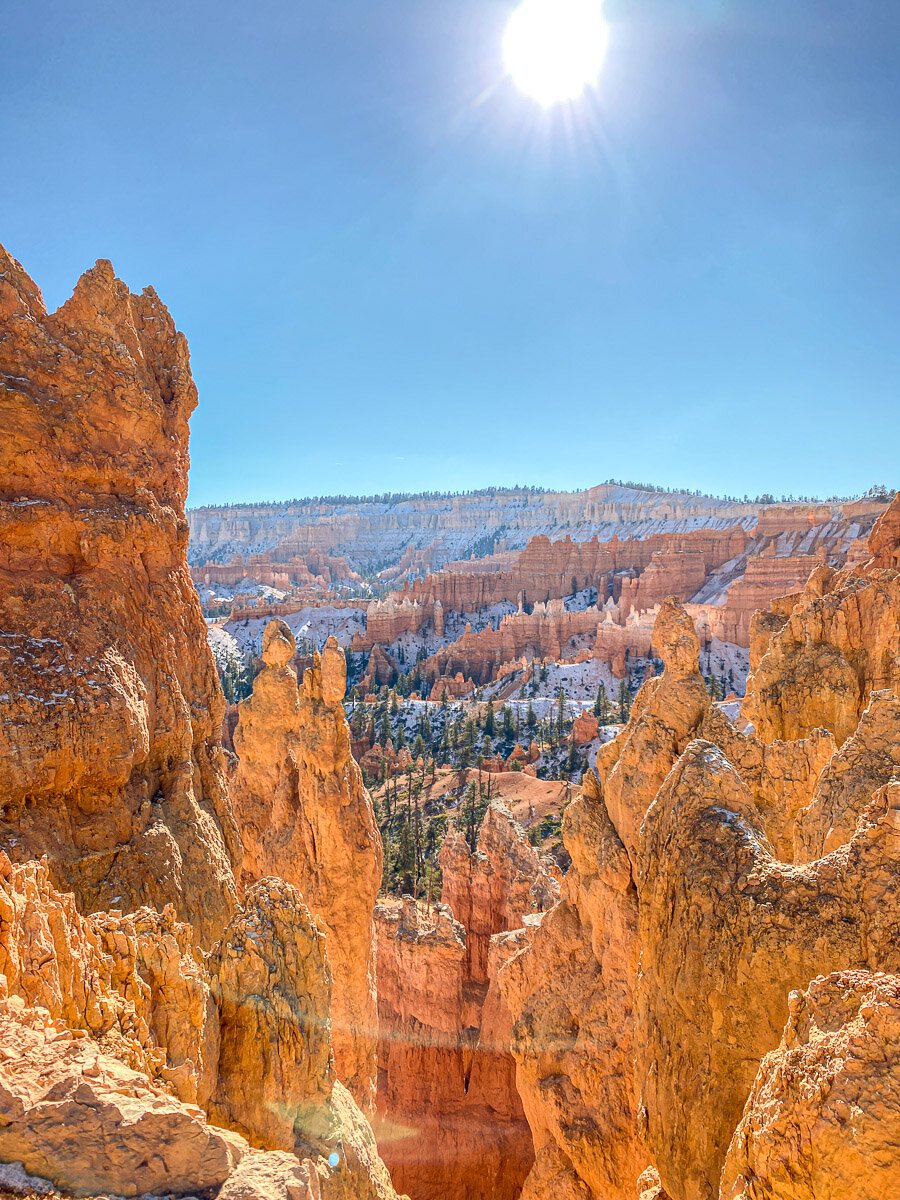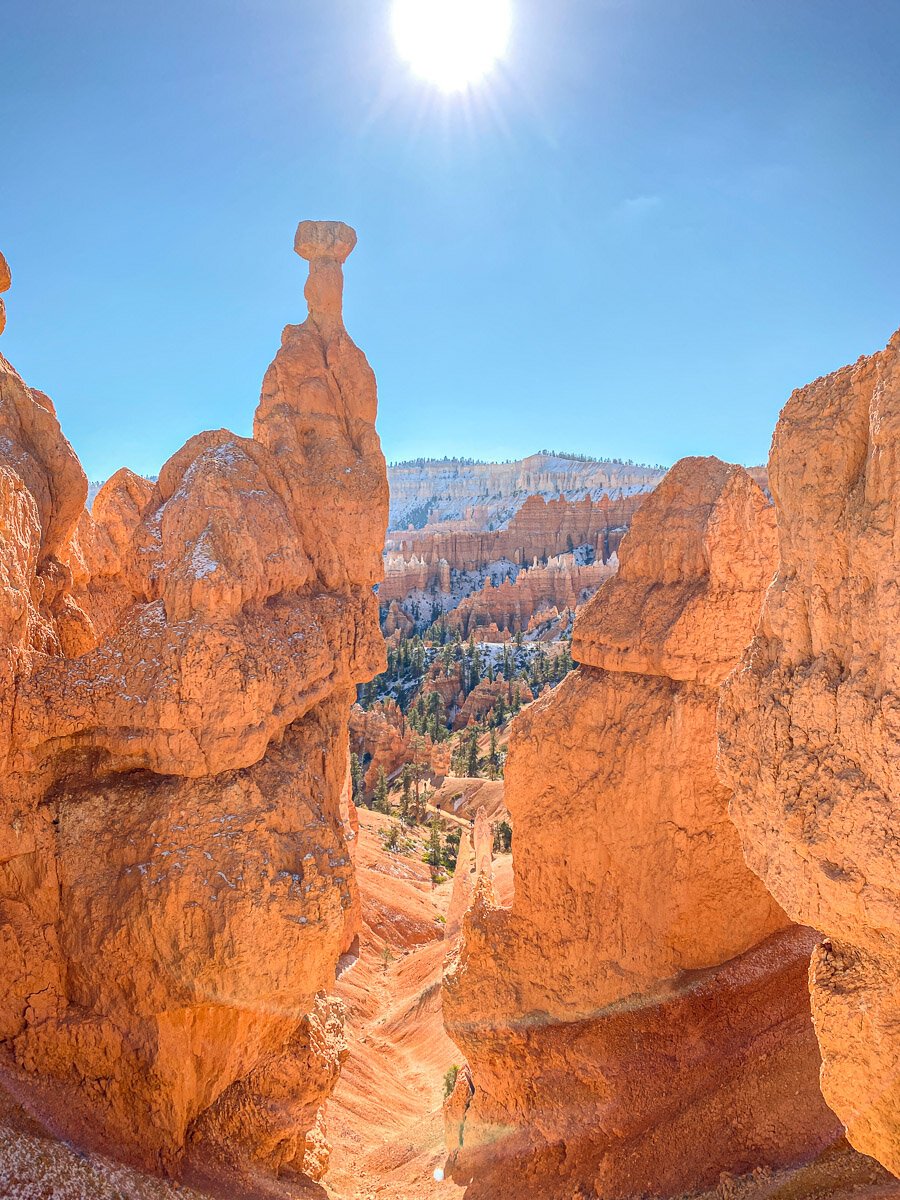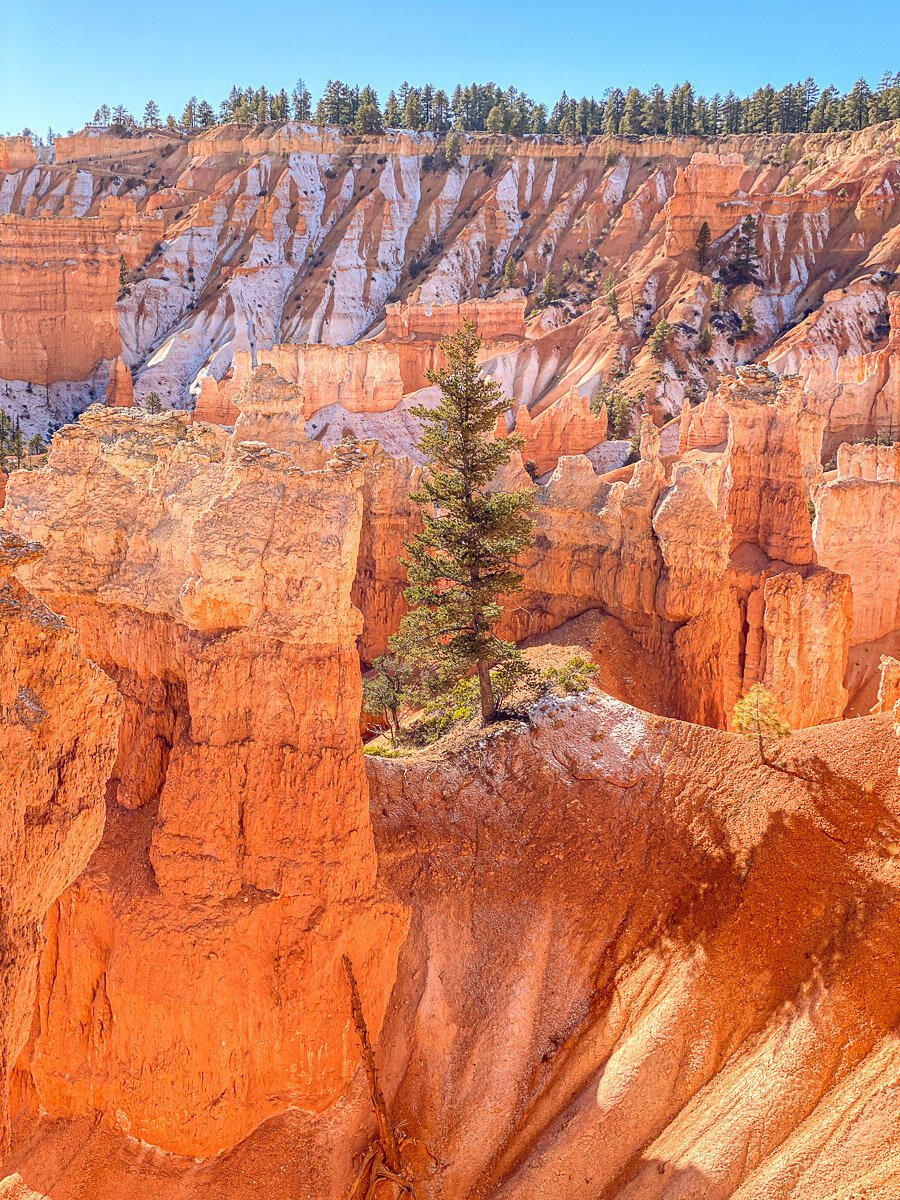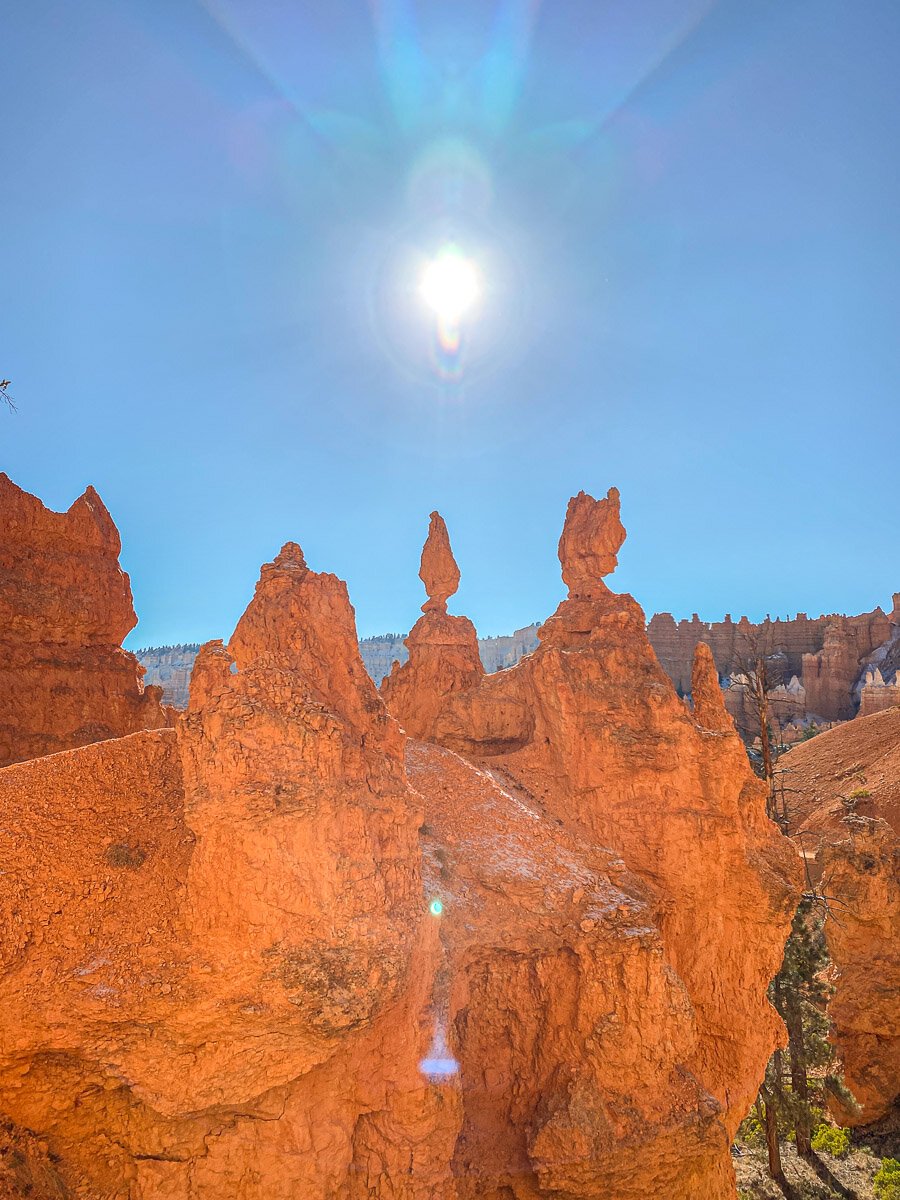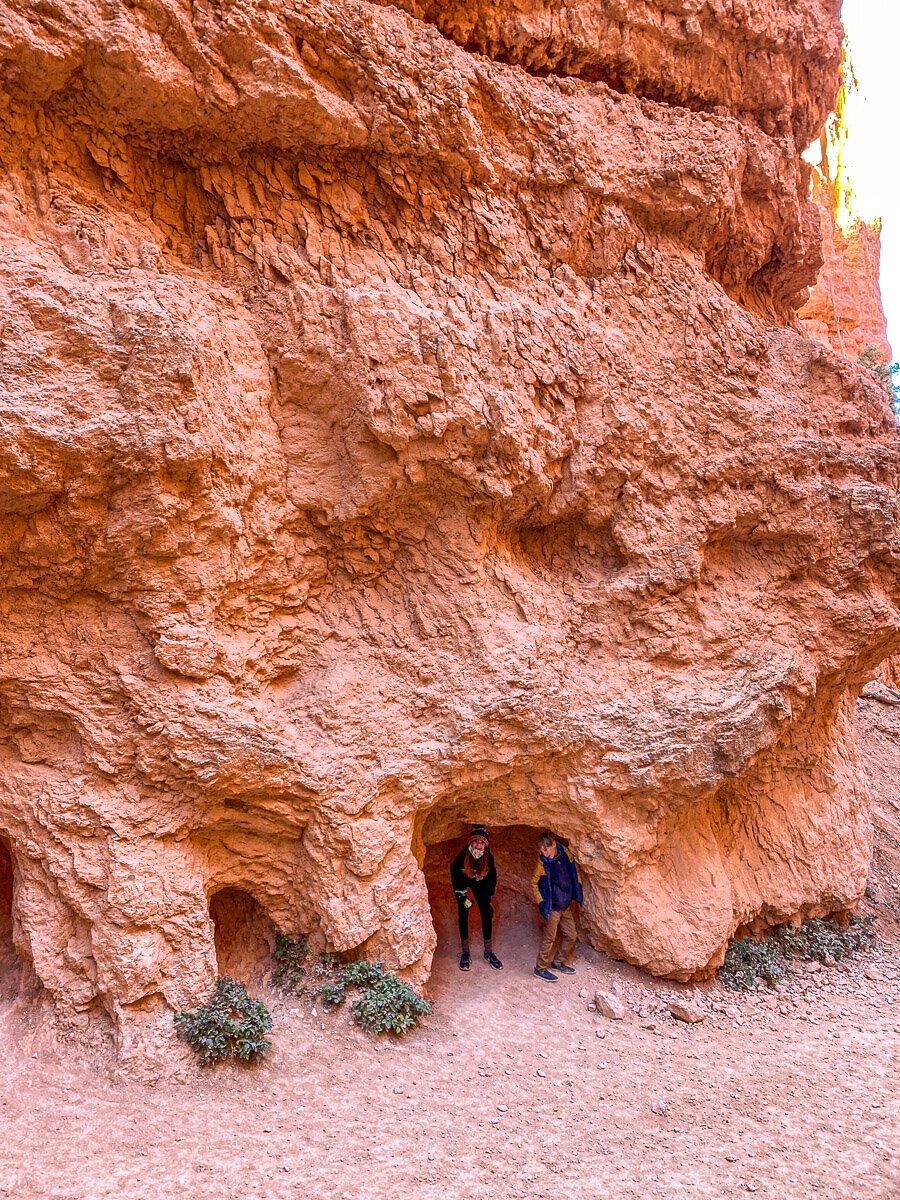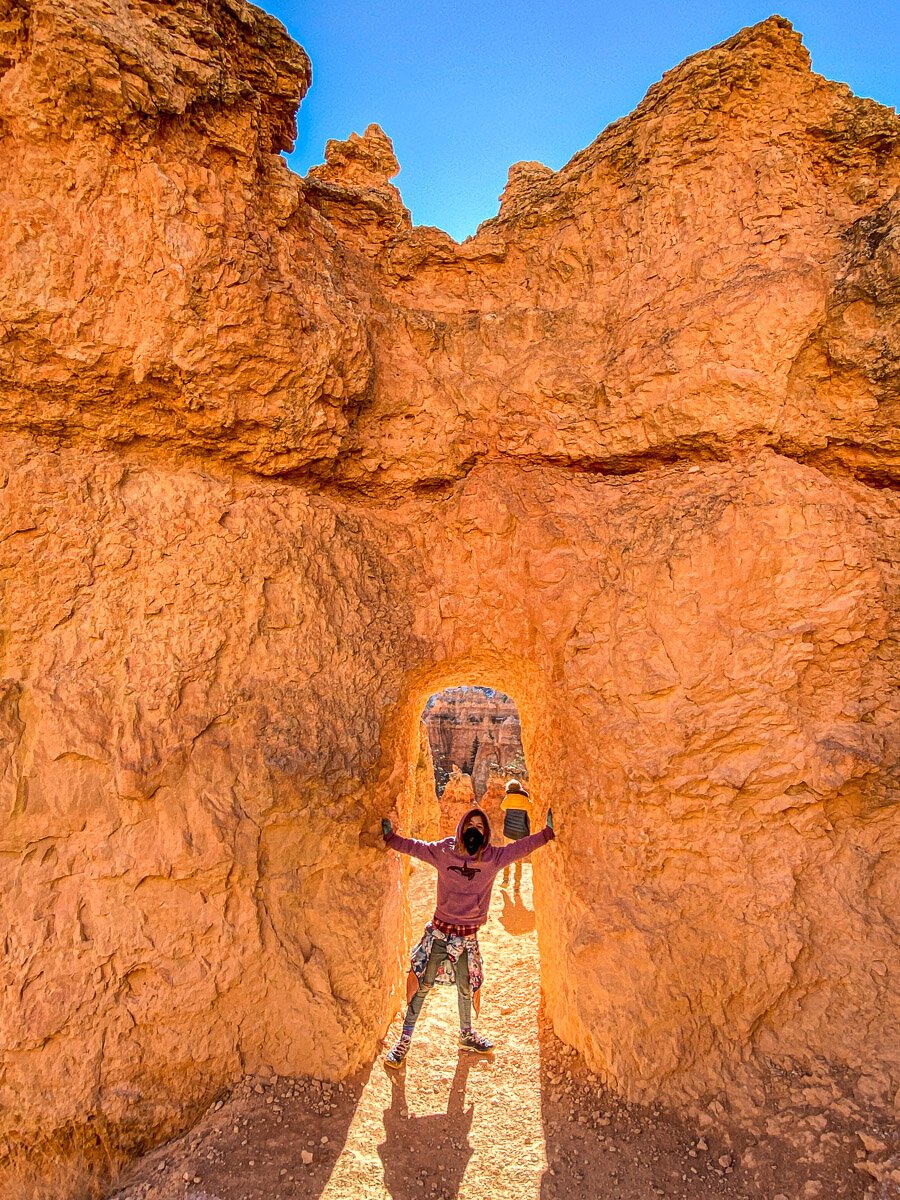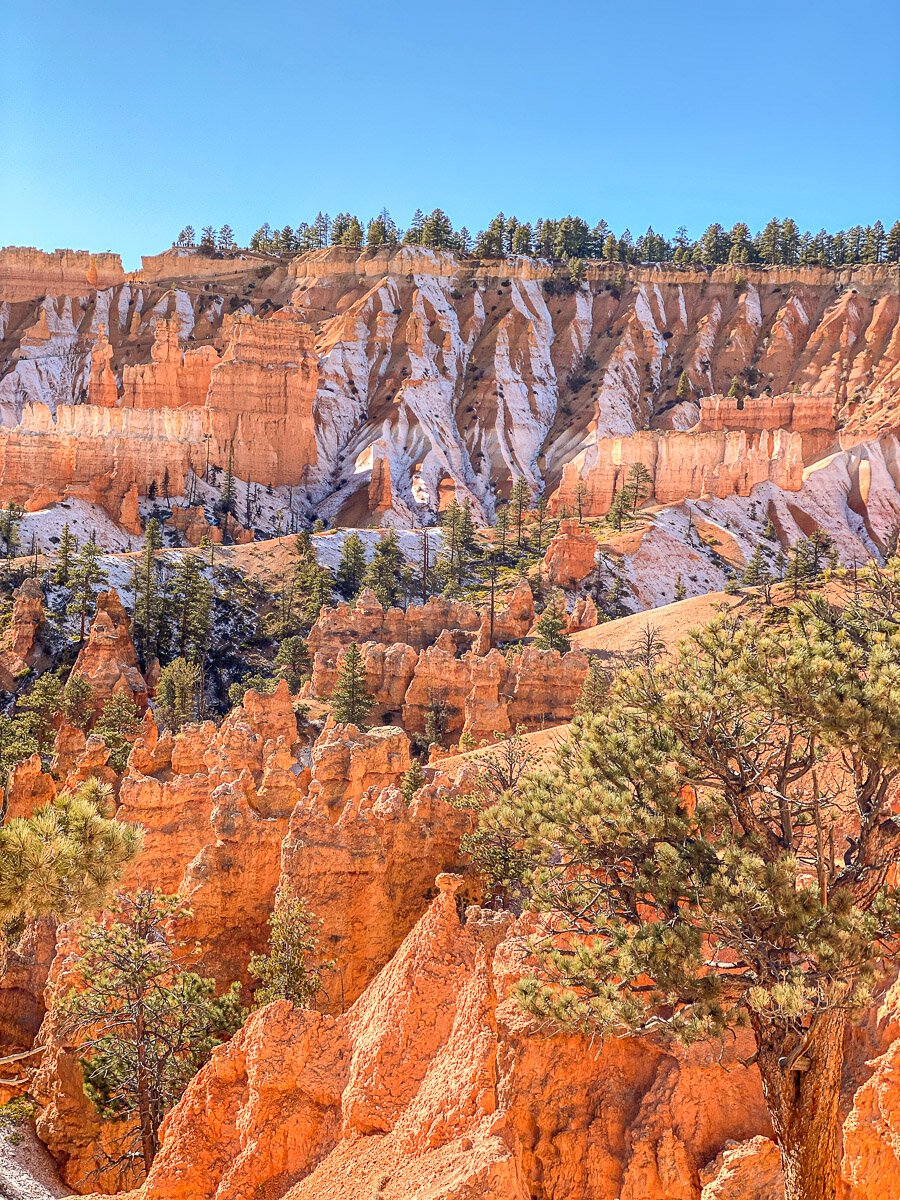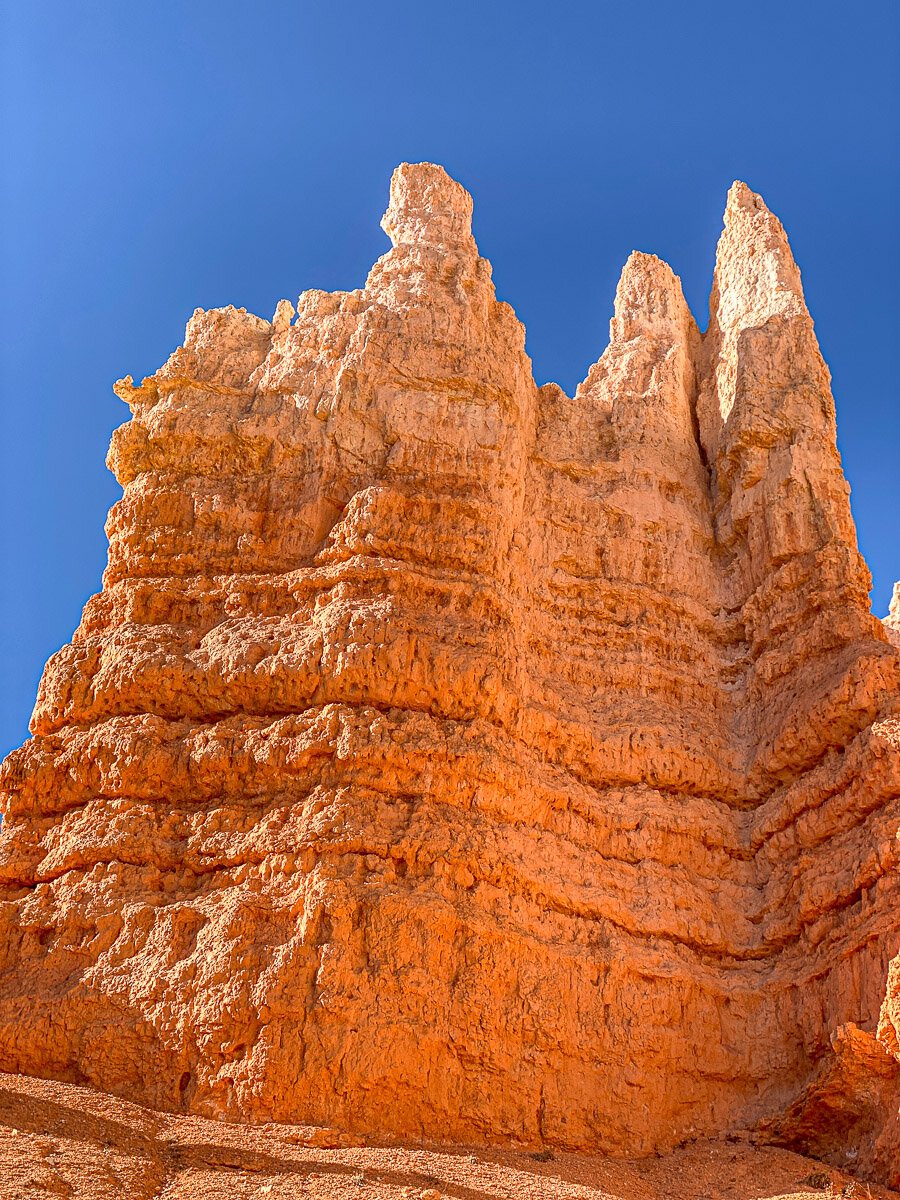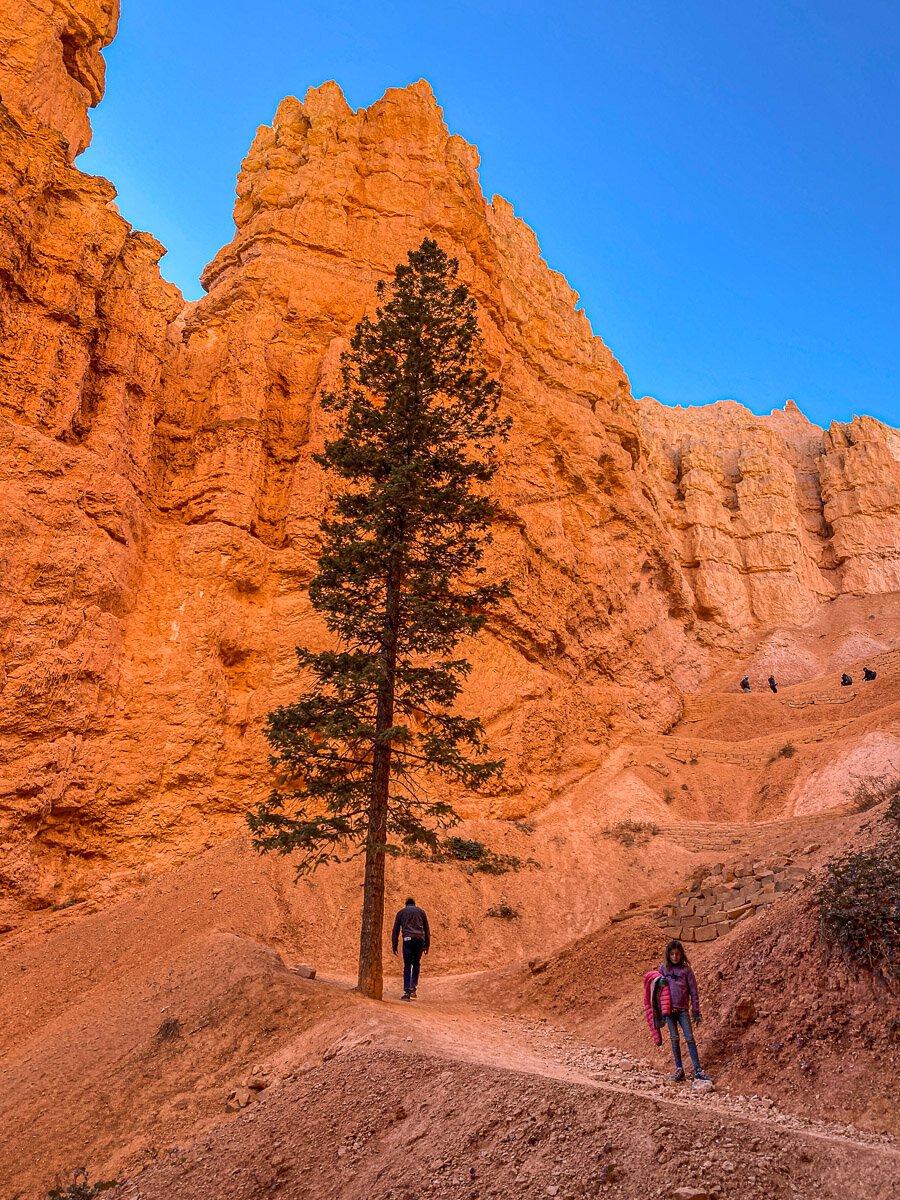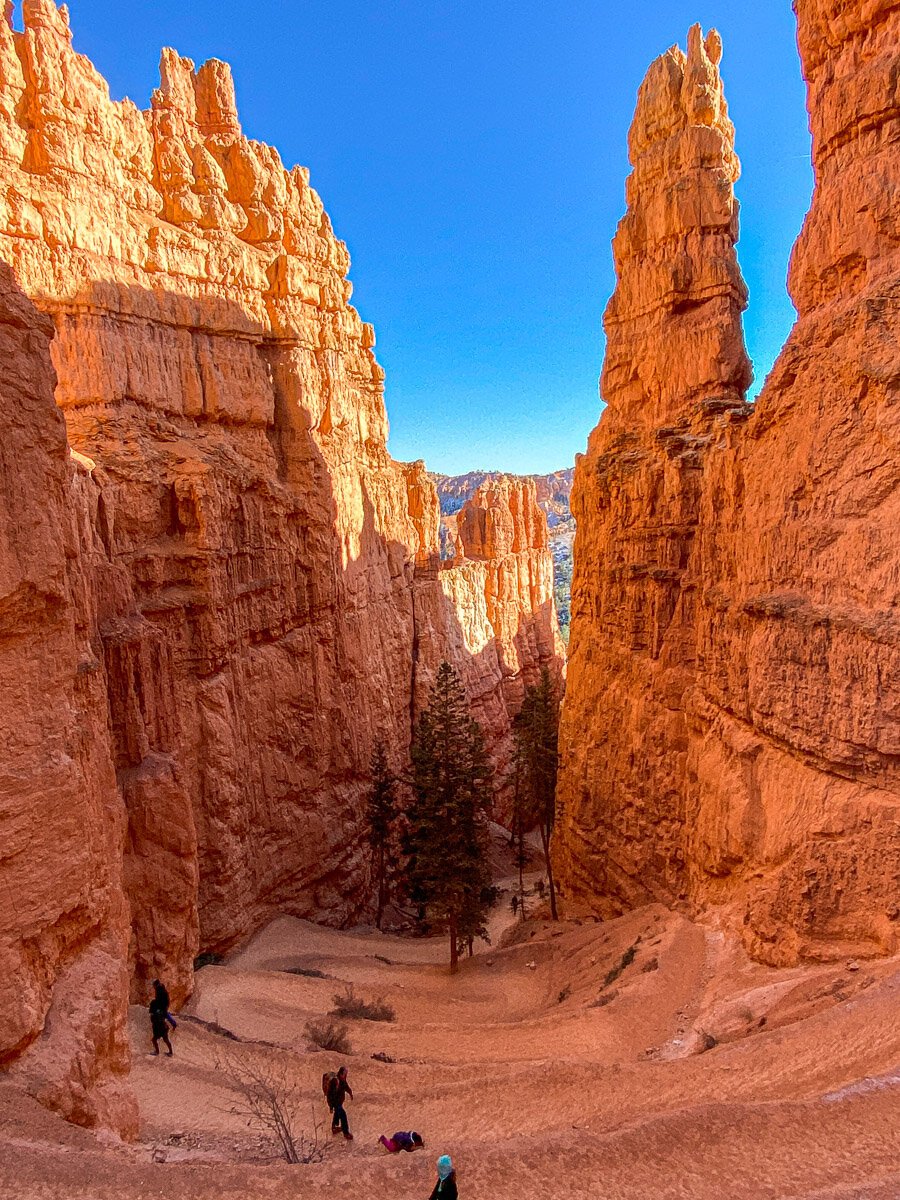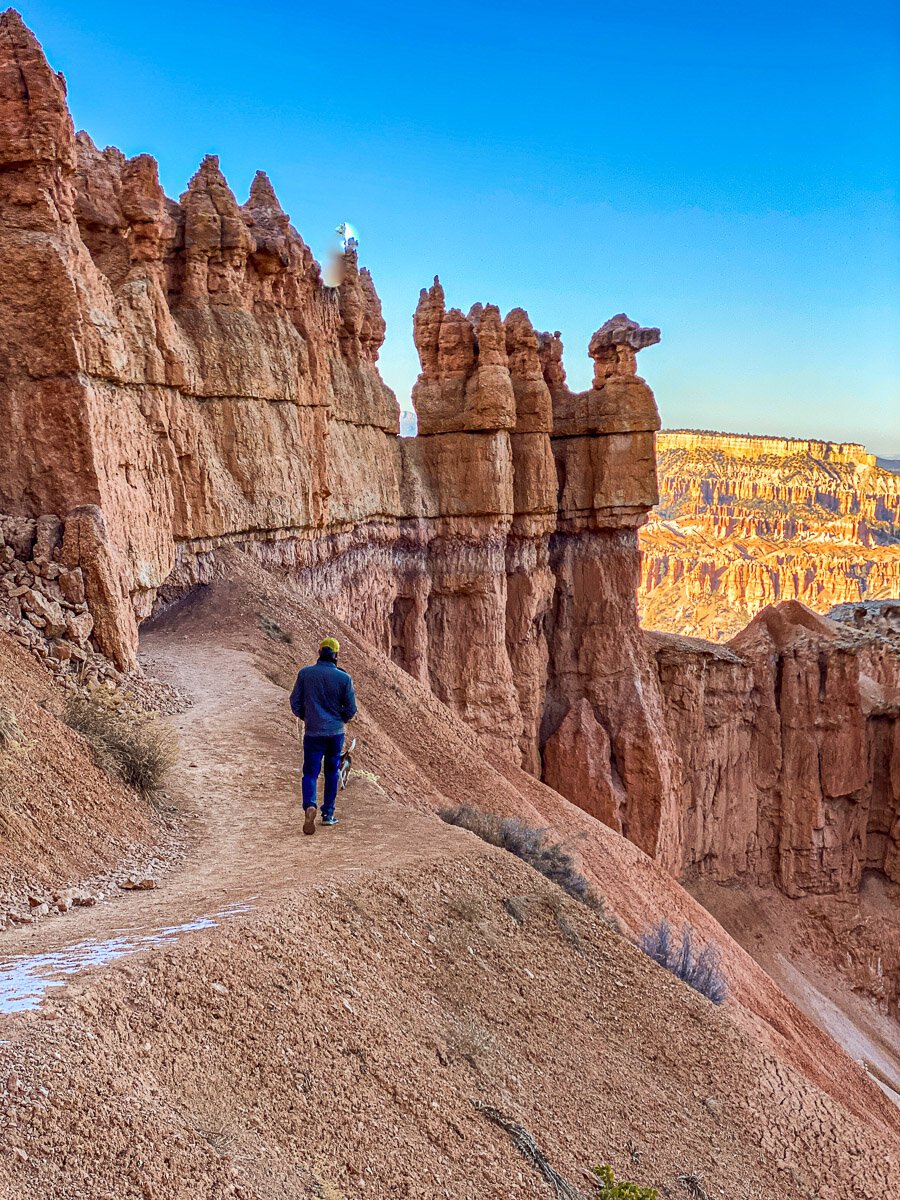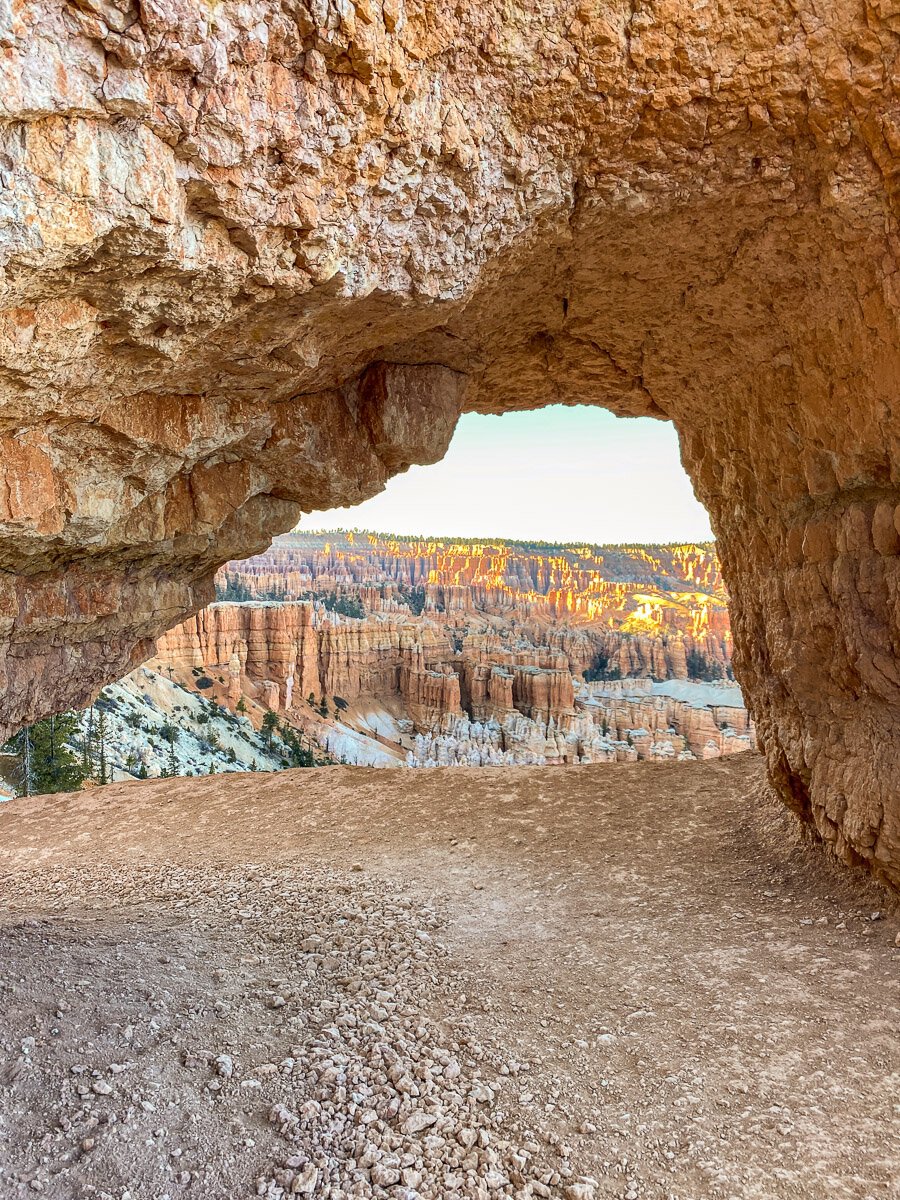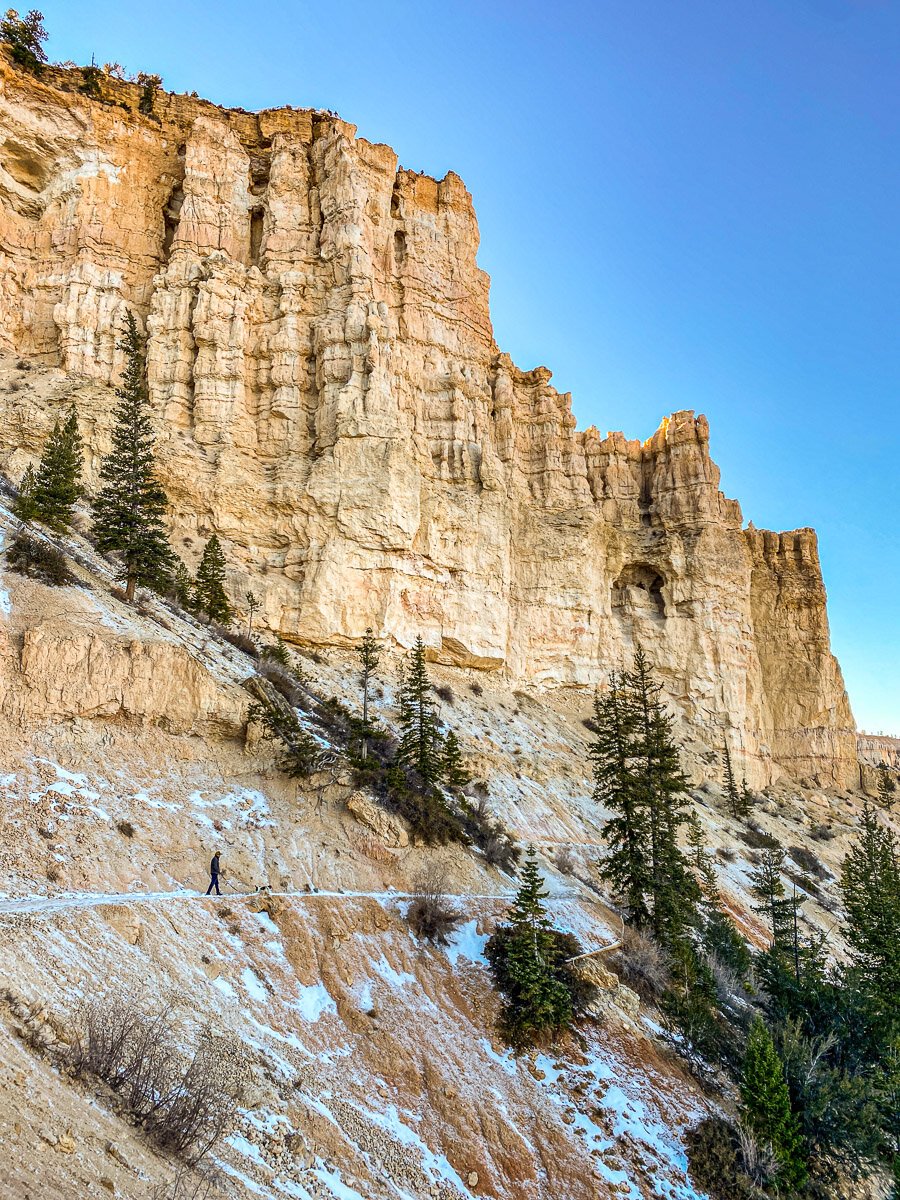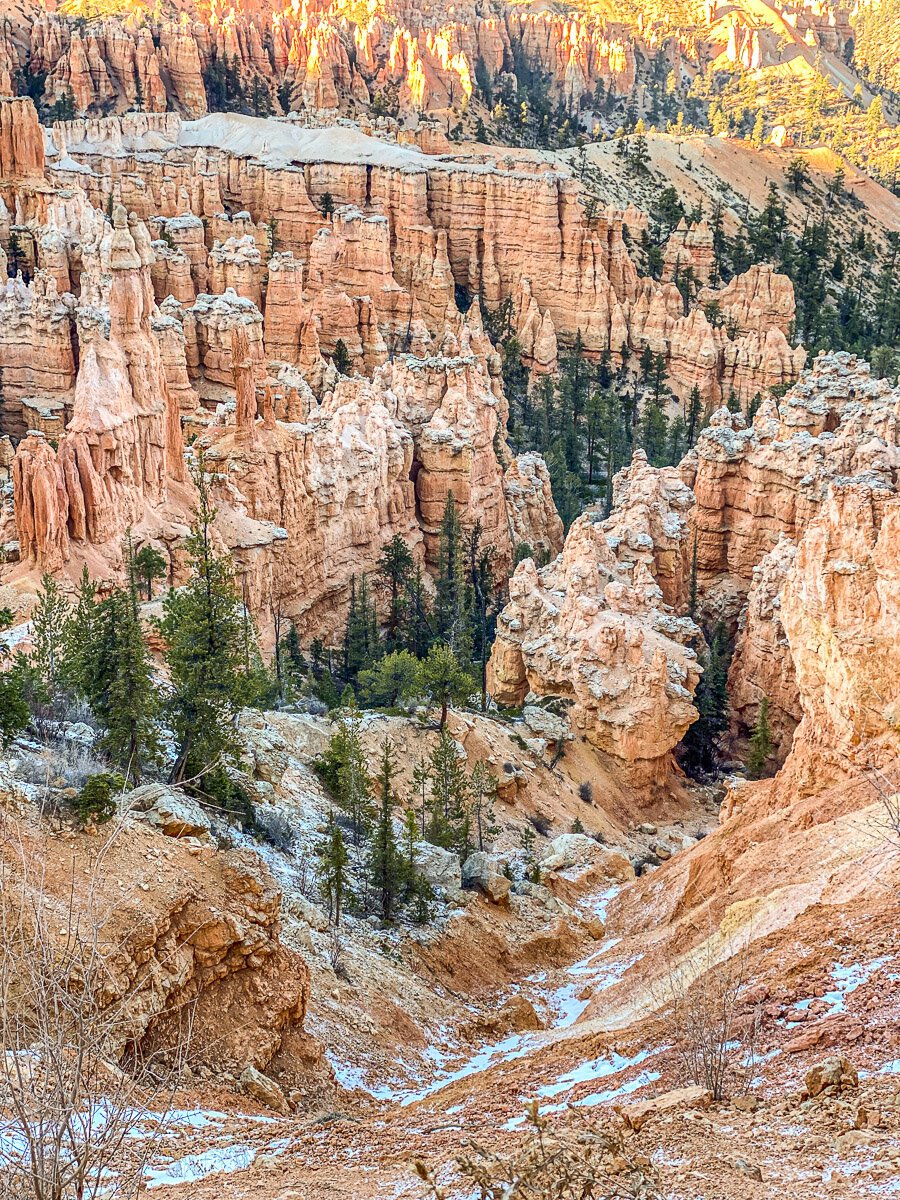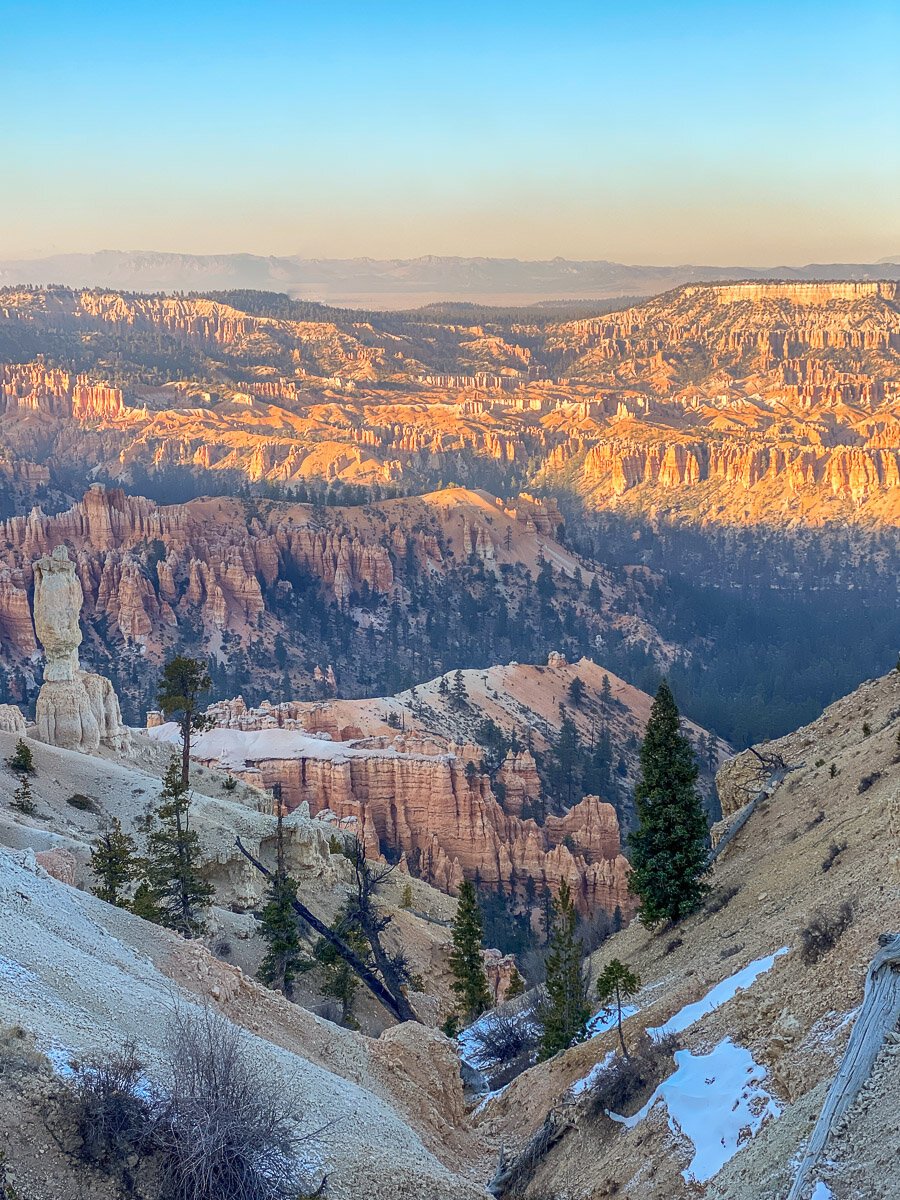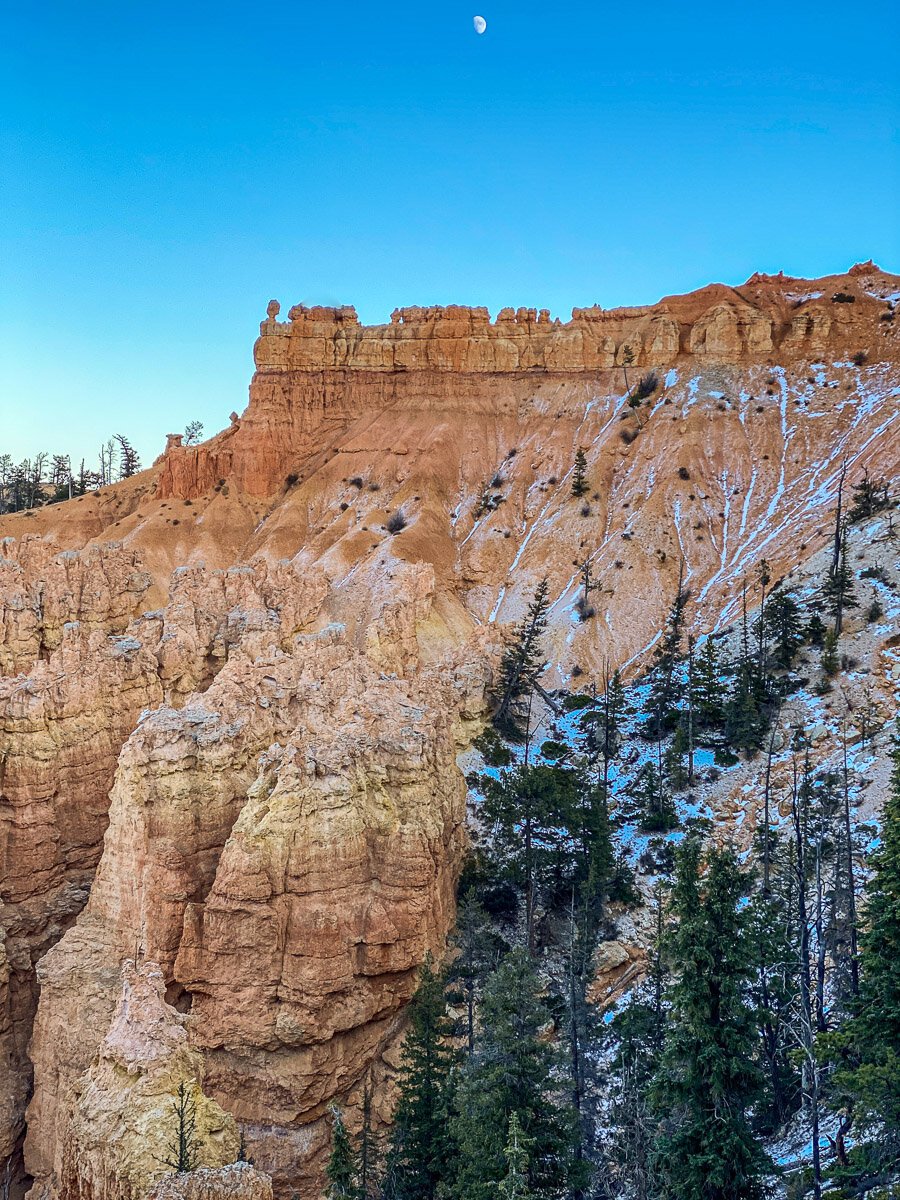Southwest Road Trip Part 4 Bryce Canyon National Park in a day
The road from Page to Bryce Canyon was just gorgeous littered with our first sights of snow. The kids were beyond excited to see these white dusted landscapes with something they rarely see in Southern California. And as a photographer, I couldn’t help but be entranced with the beauty of the red rocks contrasted with the white snow and bright blue skies.
The drive is an easy 2.5 hours from Page and with an audiobook of Land of Stories, this passes like the wind. For a list of our fave audiobooks as of late, you can read the post HERE. You can also see where we came from on this road trip before visiting Bryce Canyon on the previous post Southwest Road Trip Part 3 Sedona, Walnut Canyon National Monument & Horseshoe Bend.
We came to Bryce Canyon when the kids were just 4 years old last time. The whole point of the trip was to show them nature that completely blew their minds. We had little money then, so raod tripping to amazing national parks is definitely a cheap route to dazzle young eyes with natural beauty. At that time, we had to carry the kids a lot on these hikes. It’s awesome to see them all grown up and doing it on their own this time.
Hiking in Bryce Canyon
As usual, in any national park, there are many hiking options to choose from. My usual go to to get the lay of the land is the National Park Service site who always has an outline of various hikes and warnings of any closures or anything specific happening in the parks For Bryce Canyon, click HERE for a good breakdown of easy to hard hiking trail options. Note, pets are only allowed on the rim trail, they cannot go down into the canyon of any of those hiking trails. The most popular trail is a combo of the Queen Garden/Navajo Loop trail. You’ll see Thor’s hammer, walk through the canyon floor and up Wall Street. This last part is super steep and can be brutal with little legs and especially in summer. We did this with our kids when they were 4 and in the summer and we ended up carrying them up this steep mass. Correction, peter pretty much ended up carrying both, even I couldn’t handle it. This time our kids are 8 and it’s winter and Macy ended up running at the end of it. Oh, how things can change…. See below for an overview of the trail options
A map of the hiking trails shows that the easiest trail is to start at sunrise point to sunset point, which is what we did.
When you start at the Sunrise Point, you get long vistas beyond the canyon with a little more muted tones of this gorgeous area before diving down into the canyons of Bryce.
Just when you thought these grand vistas were amazing enough, you step into the canyon and get your socks blown off
I mean, can nature be anymore absolutely breathtaking! What a wonder
This is also quite a difference in weather from when we came when the kids were 4 and it was in the 90’s. Now we have snow, which makes for a completely different experience that is very welcomed.
What in the world are HOODOOS?
Nearly impossible to not walk just a few steps and have to stop and capture this immense beauty of these hoodoos. Yes, I said hoodoos. What is a hoodoo you ask? These are rock formations formed over time from the erosion of a plateau. Water and ice slip down into the cracks of a flat plateau (formed from an ancient lake) and break apart the rocks, creating these deep valleys and thus, hoodoos, which look like they’re erected from the ground up, but in fact, it’s the other way around. Bryce’s unique elevation created over millions of years from techtonic plate movements, make it the perfect environment to create this truly unique landscape. Over 200 days of the year this canyon goes between freezing and unfreezing temperatures, allowing water to slip into cracks when it’s above freezing, then when that water freezes, it expands by 9%, thus breaking apart the rocks in it’s way. The third factor here is the composition of rock that allows it to decompose. When it rains at Bryce Canyon, the (slightly) acidic rain is enough to dissolve the calcium carbonate that holds these rocks together and allows them to erode into their current shape (and continues to shape them). Because of this, Bryce Canyon is always changing, the rock formations are constantly under a process of erosion. The erosional force of frost-wedging and the dissolving power of rainwater shaped the colorful calcium-rich mudstone into bizarre shapes including slot canyons, windows, fins, and spires called "hoodoos." To read more about hoodoos and the land in Bryce Canyon, click HERE for this very informative article on the entire process.
There’s plenty of nooks and crannies for your kids to hide and play in this surreal wonderland that honestly could be the moon it’s so foreign feeling..
At the end of the hike, you’ll hit Wall Street. A very steep section of the trail that will test you and your kids. Macy decided to take the challenge head on and literally ran up the steep slopes. Everyone else trailed behind, huffing and puffing. If you have really little ones, be prepared to carry them up this part.
Inspiration Point Trail
We happened to meet Peter’s brother and family who were doing this similar trip, but in the opposite direction. We were able to perfectly meet up with them for this day hike in Bryce. Which also gave Peter and I the chance to take a hike together without any little feet possibly whining or slowing us down. We can count the number of times on our one hand that we haven’t been with our kids during this pandemic, so this was a much needed little slice of adult time.
Since this side of Bryce Canyon is mostly shielded from the sun, there was a lot more snow and a wild wind whipping through the trees and slamming into our faces
Available to purchase on the Prntshop HERE
Territory Acknowledgement
You can just imagine being one of the early peoples walking across vast lands of desert and then coming across this incredible landscape. one thing to do in these amazing lands is to always stop and think about doing a territory acknowledgment. These lands are often sites of colonial massacres of indigenous peoples. In order to acknowledge these events and learn more about the indigenous people, here is a brief history of the area and it’s early peoples. Fremont and Anasazi (or Ancestral Puebloans) people occupied this portion of the Colorado Plateau from around 200 A.D. until 1200. The Fremont were more to the north and west and known for their leather deer skin moccasins, vast rock art, unique basket weaving and clay figurines thought be used for religious purposes. The Anasazi more to the south and east and known for their pottery petroglyph style called Barrier Canyon Style which is protected by the sun and their cliff dwellings seen at some of the UNESCO world heritage sites of Chaco Canyon, Mesa Verde and Bandalier National Monument. To learn more about the Anasazi, you can head to the Anasazi State Park Museum in Boulder, UT. There is recently discovered evidence of the mixing of these two cultures on the Kaiparowits Plateau. However, in 1200AD bot of these tribes disappeared and the Paiute Indians then arrived in this area.
The Paunsaugunt Plateau was used for seasonal hunting and gathering activities, but there is no evidence of permanent settlements. The Paiute Indians believed that the strange red rock hoodoos that dominate Bryce Canyon were ‘Evil Legend People’ (To-when-an-ung-wa) who were turned to stone by the powerful Coyote spirit. They called these mysterious rock formations Anka-ku-was-a-wits, the “red painted faces.” This legend became famous in 1936, when a Paiute elder nicknamed Indian Dick retold the legend to a park naturalist. The legend is displayed in the Bryce Canyon National Park visitor center museum.
In the 1870's, it was the Mormon pioneers that settled near Bryce Canyon. Bryce Canyon was established as a National Park in 1928 and named after Ebenezer Bryce, an early Mormon settler, who homesteaded in Bryce in the mid 1870's.


